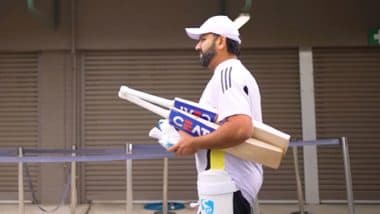
VIRUDHUNAGAR: It was an ordinary Sunday morning, for some students in Srivilliputhur. Just another weekend spent preparing for their regular tuition class. Books were packed; notes neatly arranged; and the usual hum of Sunday routines filled the air.
Little did they know that their teacher S Shobana had something extraordinary planned for them that day, something far beyond the confines of their textbooks and classroom walls. Through one of her class students J Aaruthra, the teacher came to know that the former’s father, G Jayahari Prabhu (33), owns a collection of coins and other antique items at his house. The tuition teacher took her students to Prabhu’s house in Srivilliputhur to catch a glimpse of his antique collections.

The students were captivated by the rare coins and antiques, some dating back to 600 BCE, including items from the ancient Ganthara and Magadha kingdoms. Their eyes sparkled with excitement as they held the history of ancient civilizations in their hands. For the first time, history felt personal and alive, no longer just dates and facts in a textbook.
G Jayahari Prabhu is an electronics engineering professor at AAA College of Engineering and Technology in Sivakasi. However, his passion for collecting ancient artefacts including coins has excelled him in the field of archaeology and history. Prabhu has collected nearly 5,000 coins from 100 different dynasties in total, 65 vintage radios including the limited editions used during World War II, hundreds of postcards, foreign currencies, and ancient antiquities.
Picking a gold coin from his collection, Prabhu showed it to the students. The front side of the coin had an image of a king in a standing position with four dots nearby. On the other side of the coin, the king was in a sitting position, and the word Lankaveera was inscribed in Devanagari script.
“By observing these images, the dynasty of a king could be predicted. Likewise, this coin with an image of a king denotes that it belongs to a Chola king. Since the 4.
3 gm coin is made of gold, it is understood that the kingdom was wealthy during his rule. The number of dots nearby conveys the Tamil month, in which the coin was issued. Since the coin has four dots, the coin was issued during the month of Aadi.
Most importantly, the word Lankaveera inscribed on the coin signify that other than Tamil Nadu, the Chola king expanded their power in Sri Lanka,” he told the students. Prabhu comprehended the history of different kingdoms through the coins, from conveying a dynasty’s worship practices to the kingdom’s territorial control and trade practices. “Only after receiving calls from the parents that it was time for lunch, we realised that hours had flown by.
We never envisioned that there would be such a wide range of ancient collections with such interesting stories behind each artefact,” Shobana said. Following the session, the students often insisted Shobana to revisit Prabhu’s house to explore more collections. The teacher also noted a growing sense of curiosity about ancient history in students from then on.
“When I teach them now, they immediately start co-relating the concepts with what they learned in Prabhu’s house and understand the subject well instead of merely memorising it,” Shobana said. It is not only the school students but every person, who has seen Prabhu’s collections, has developed an interest in this domain. However, collecting the artefacts was not just an overnight task for Prabhu.
It was 20 years of hard work and perseverance. “For the last two decades, every night, I have devoted night hours to learn about history and coins. During Sundays and vacations, I also travel to old scrap metal shops from where I buy the coins and antiques as the shopkeepers don’t maintain them.
Every month, I save a portion of my salary to buy such items,” he noted. After his wife suggested Prabhu to make sure that his collection should not just be a portion of the household but benefit other people also, he exhibited it at an event. At present, the numismatist is in the process of turning a portion of his house into a tiny museum to showcase his collections and devote a part of his time to educate people about ancient history.
.










